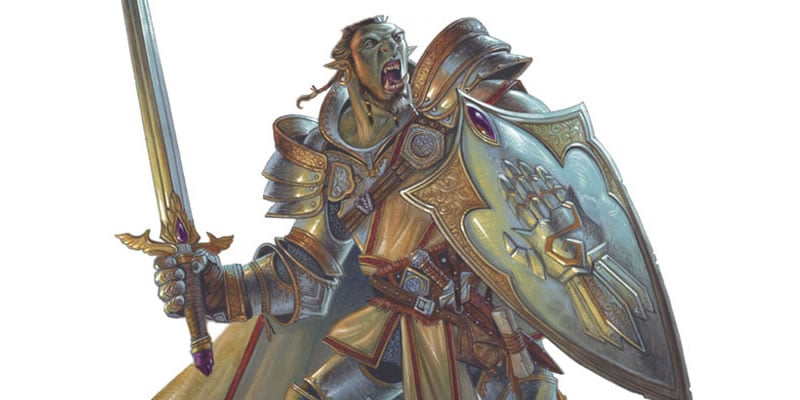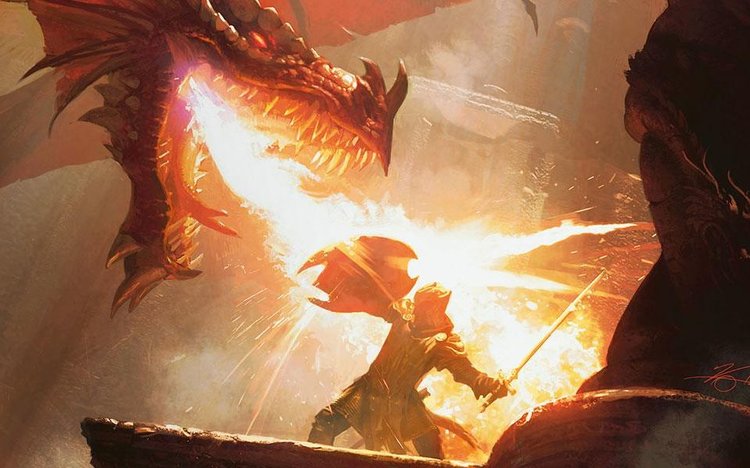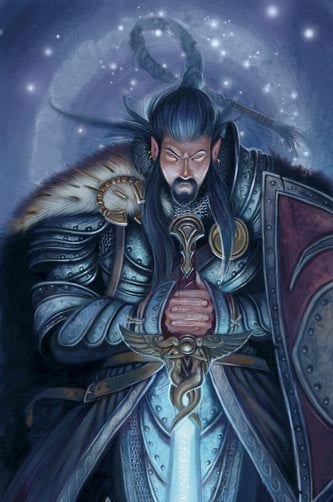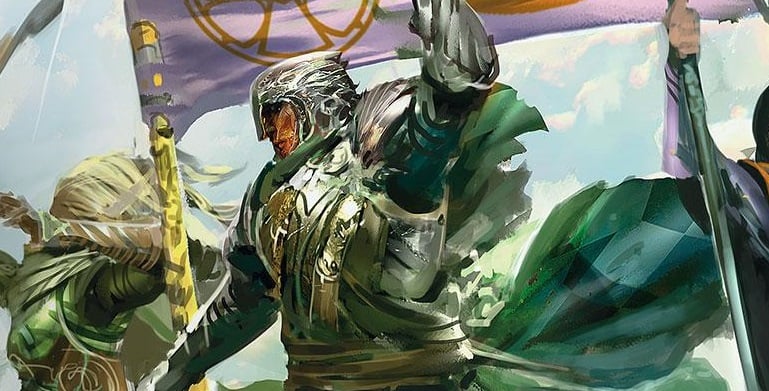D&D: Prepping a Paladin – Piety, Protection, and Pith

Would you like to smite while you fight? Then the Paladin might be the class for you.
Paladins are a potent class, capable of taking and dishing out a surprising amount of damage. They’re one of the more resilient classes out there, with easy access to healing in the form of their Lay on Hands and spells–a resource which they can also convert to additional damage with surprising ease. The classic Paladin combo involves casting a Smite spell and then also using your Divine Smite ability so you’ve got twice the smite–it all comes down to knowing when to go nova and when to hold back. Paladins need a recharge as the day wears on, and it’s really only the long rest that will top them back up.
But Paladins are capable of anchoring a party like nobody else. The amount of sustainability they have lets them function well independently, but when backed by the rest of the party–or when supporting the rest of the party, they are a force to be reckoned with. Let’s take a look.
Have Faith You’ll Come Out On Top
Paladins are, more than anything else, brawlers. They are, as mentioned, capable of going toe to toe with just about any foe you can think of. Creatures capable of casting spells, or who function better at range, might give them a little more trouble–they are usually going to be in heavy armor and won’t have the mobility of, say, the Monk. But what really makes them great brawlers is that they can support themselves and others as they go. A good Paladin can really hold that line, and make it easier for the rest of the party to hang in there. Lay on Hands is a part of it, ensuring that you’ll always have a heal close at hand. But the real lynchpin is in your auras. At 6th and 10th you’ll get the Aura of Protection and Aura of Courage respectively. This gives your party massive bonuses to saving throws and immune to fear, so your core party gets a big boost to resilience.
Aside from that, your abilities mostly just get better as you level up. Your Sacred Oath (subclass) shapes the way you use some of your abilities–it determines your Channel Divinity abilities, and what bonus spells and powers you’ll have. They help determine the flavor of your Paladin, and in this case, each subclass is like picking a secondary class for your character. So the Oath of Devotion might be a support subclass, while the Oath of the Ancient is a subclass that’s kind of like adding a Druid or a Wizard (control and having the right tool for the job). Let’s take a look.
The Oath of the Ancient as we just mentioned, is a bit like adding a Wizard or Druid to your Paladin. With spells that give you some powerful battlefield control and the ability to ensnare foes with your Channel Divinity you’ll be able to keep your foes exactly where you want them, and restrained. So please enjoy the advantage you’ll have on attacks that you make against them. You’ll additionally gain an aura that adds to your support abilities and eventually become a bastion of primal power.
Pick this subclass if you want to play the kind of Paladin who locks down the battlefield and controls where the fight happens (right by you at all times).
Paladins who follow the Oath of Conquest do not really resemble the traditional Paladin. They are in fact, anti-paladins–infernal versions of the stereotypical Paladin. With fear and surprise among their chief weapons, nobody will be expecting you to control the fight nearly as well as you do. It’s like adding an evil Cleric to your Paladin–lots of fear based powers that can isolate or lock down enemies.
Pick this class if you want to really direct the flow of battle. Especially if you want to dominate the battlefield.
Oath of Devotion Paladins get a ton of support power from their Oaths. They gain some powerful buffs and counters to enemy buffs–it’s a lot like adding a Cleric to your Paladin for extra holiness. These Paladins can Channel Divinity to hit even harder than standard Paladins, and at higher levels can keep themselves from being charmed (and helping others keep their own minds as well).
Pick this subclass if you want to keep fighting forever, and aren’t too worried about dealing damage. Or conversely, pick this one if the other support character in the party wants to try something…weird.
Paladins who swear the Oath of Redemption are given over to another path entirely. These resemble the other Paladins least of all. They are all about peace, serenity, and The For–er–Wisdom. This one’s real interesting–kind of like adding a Monk to your Paladin, this subclass really changes the Paladin, granting access to a lot of protection flavored abilities, including ones that reflect damage back into an attacker or let you shield others as part of your reaction.
Pick this subclass if you want to keep your party safe above all else–and especially if you want to turn enemies into allies by redeeming and forgiving them.
And finally the Oath of Vengeance is for Paladins who like the idea of all the damage that Paladins can do, but want to focus it on dealing with a single, powerful enemy. I’d liken it to adding a Ranger or Rogue to your Paladin. All your abilities will be focused on focusing on a single target and taking them out while preventing them from fighting anyone but you. Your spells give you mobility and deny your opponents’ ability to move around. Most of your offensive bonus spells are all single-target control spells. And your Channel Divinity will help you defeat your enemies, giving you constant advantage against a single foe, or turning any single foe you decide.
Pick this class if you want to be the one to deal with the boss monsters. Or if you want to be chasing a single foe around the battlefield.
At any rate, that’s the Paladin. A diverse, yet focused class that can hold down a party in their own right–and unstoppable when backed by an awesome team.
Happy adventuring!









